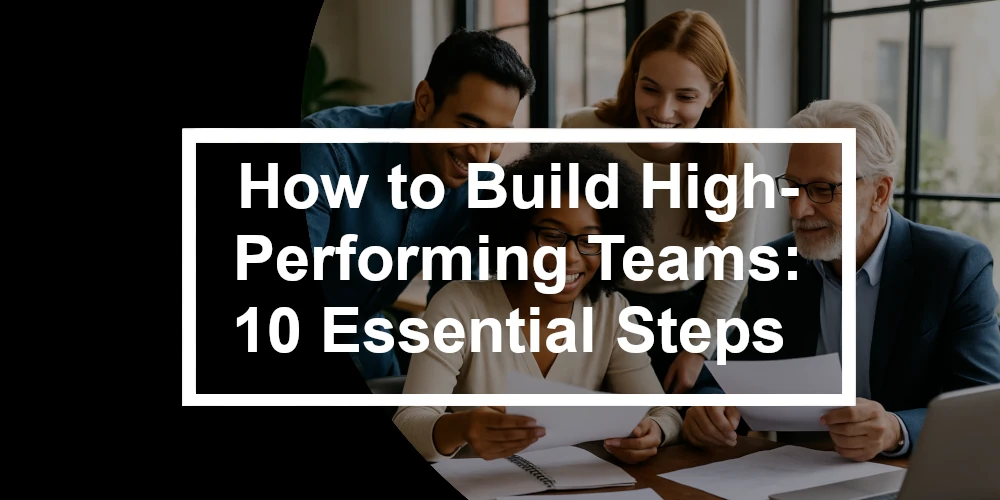
At Hunterskill Recruitment in Ipswich, we know that building high-performing teams is essential to driving lasting business success. Whether you’re expanding into new markets, launching a product, or scaling operations, having the right people in the right roles is non-negotiable. But creating a high-performing workforce takes more than just good hiring – it requires a resourcing strategy that is aligned with your long-term goals.

In this guide, we outline the 10 key steps to help employers strategically plan their resourcing needs, ensuring they attract, engage and retain top talent.
1. Assess Current and Future Business Goals
Start by clarifying your organisation’s strategic direction. Are you growing, diversifying, or streamlining? Your objectives will determine the roles, skills, and experience you need. Aligning your resourcing strategy with your business plan ensures your workforce is equipped to meet these goals effectively. If you’re currently looking to grow your team, you can post a job with us to begin attracting quality candidates.
2. Evaluate Your Current Workforce
Conduct a skills gap analysis to understand what strengths you already have and where gaps exist. Reviewing team performance and productivity helps highlight underutilised talent and identifies where improvements or new hires may be necessary. This information is crucial when deciding which roles to fill or restructure.
3. Forecast Your Hiring Needs
Plan ahead by estimating how many new hires you’ll need—and in which areas. Anticipate seasonal fluctuations, retirements, project demands, and turnover risks. A forward-looking hiring plan allows you to respond quickly to business changes and maintain team performance. If you’re a candidate planning ahead in your career, find a job through our expert team.

4. Develop a Realistic Resourcing Budget
Recruitment is an investment. Set a budget that accounts for salaries, benefits, advertising costs, training, and recruitment agency fees. Use salary benchmarks like our East of England Salary Guide to ensure your packages are competitive and designed to attract the best talent. A realistic budget helps you hire efficiently and avoid costly delays or mismatches.
5. Align Recruitment Strategy with Business Needs

Your recruitment strategy must reflect your business goals and operational needs. Decide whether permanent, temporary or contract staff are the best fit. At Hunterskill, we offer tailored staffing solutions to meet a variety of needs across sectors, including healthcare, logistics, engineering and more. Start your hiring journey today and register with Hunterskill to discuss your requirements.
6. Build a Talent Pipeline
Don’t wait for a vacancy to start sourcing. A strong talent pipeline reduces hiring delays and ensures you’re never caught short. Build relationships through proactive networking, internships, referrals and professional events. At Hunterskill, we actively maintain a pool of pre-qualified candidates ready to step into roles as your business grows.
7. Prioritise Diversity and Inclusion

Diverse teams drive innovation, collaboration and performance. Ensure your hiring practices promote inclusivity by using unbiased job descriptions, accessible application processes and measurable diversity targets. An inclusive resourcing strategy enhances both your company culture and your employer brand.
8. Focus on Development and Retention
Retaining talent is just as vital as attracting it. Offer training, mentorship and career progression opportunities to keep employees motivated and loyal. A culture of development builds internal capability and strengthens your teams long-term. If you’re an individual looking to grow in your role, upload your CV to access career-boosting opportunities.
9. Use Effective Interview and Onboarding Practices
Structure your interviews to assess not only skills but cultural fit and long-term potential. Once hired, support new team members with a thorough onboarding plan to help them integrate quickly. Our 15 Tips for Creating an Effective Interview and Onboarding Checklist will help you build confidence in your process.
10. Monitor, Measure, and Improve
No resourcing strategy is ever truly finished. Monitor key hiring metrics like time-to-fill, cost-per-hire, and retention rates. Adjust your approach based on what’s working and what’s not. Regular reviews ensure your teams remain aligned, agile, and high-performing as your business evolves.
Conclusion: Build Stronger Teams with Hunterskill
Strategic resourcing is the foundation for building high-performing teams that will drive your business forward. At Hunterskill Recruitment, we’re here to support you every step of the way – whether you’re looking to find a job, register with Hunterskill, upload your CV, or post a job. Contact our expert team in Ipswich today to build your workforce with confidence and clarity.